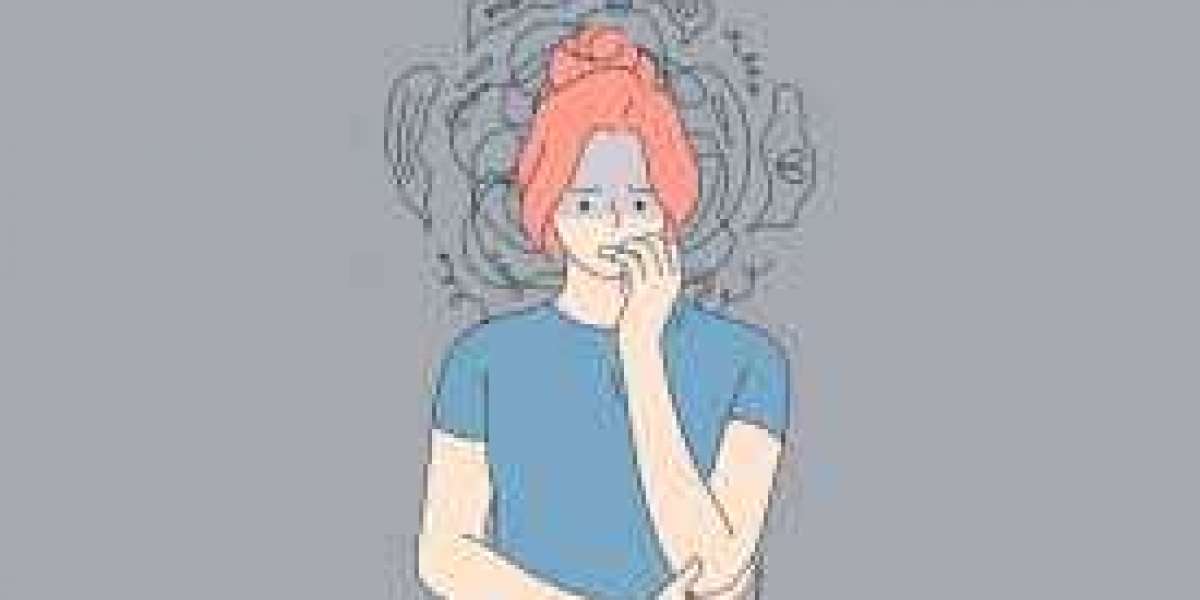Childhood anxiety is a significant mental health concern that affects millions of children worldwide. While occasional fears and worries are a normal part of growing up, anxiety disorders can disrupt a child's daily life, causing distress for both the child and their family. This comprehensive guide aims to shed light on the causes, symptoms, and treatment methods of childhood anxiety, helping parents, caregivers, and educators understand and address this critical issue.
Understanding Childhood Anxiety
Anxiety in children is characterized by excessive fear, worry, or nervousness that goes beyond typical childhood concerns. It can manifest in various forms, such as separation anxiety, social anxiety, generalized anxiety disorder (GAD), or specific phobias. Unlike the occasional nervousness children might feel before a big test or new experience, anxiety disorders are persistent, often lasting for six months or more, and can significantly interfere with a child's ability to function.
Causes of Childhood Anxiety
1. Genetic Factors
One of the primary contributors to childhood anxiety is genetics. Children with a family history of anxiety or other mental health disorders are more likely to develop anxiety themselves. Research suggests that certain genes related to the regulation of mood and stress responses may increase the likelihood of anxiety disorders being passed down through generations.
2. Environmental Factors
The environment in which a child grows up plays a crucial role in the development of anxiety. Stressful or traumatic experiences, such as parental divorce, bullying, or the death of a loved one, can trigger anxiety in children. Additionally, overprotective or overly critical parenting styles can contribute to the development of anxiety by making children feel unsafe or unable to meet expectations.
3. Brain Chemistry
Imbalances in brain chemicals, particularly neurotransmitters like serotonin and dopamine, are linked to anxiety disorders. These neurotransmitters help regulate mood, and when their levels are off-balance, it can lead to feelings of anxiety. Children with anxiety disorders may have an overactive amygdala, the part of the brain responsible for processing fear and emotional responses.
4. Personality Traits
Certain personality traits can predispose a child to anxiety. Children who are naturally more timid, shy, or sensitive may be more prone to developing anxiety disorders. These traits can make it harder for children to cope with stress and may lead them to avoid situations that cause them discomfort, reinforcing their fears over time.
Recognizing the Symptoms of Childhood Anxiety
1. Physical Symptoms
Anxiety in children often manifests through physical symptoms, which can include headaches, stomachaches, muscle tension, fatigue, and sleep disturbances. Children may also experience rapid heartbeat, sweating, dizziness, or shortness of breath, particularly in situations that trigger their anxiety.
2. Emotional Symptoms
Emotionally, children with anxiety may exhibit excessive worry, fear, or irritability. They might become easily upset or have frequent meltdowns. Some children may develop a persistent need for reassurance or express fears that are disproportionate to the situation, such as a deep fear of being separated from their parents or intense worry about something bad happening.
3. Behavioral Symptoms
Behavioral changes are common in children with anxiety. These may include avoidance of certain situations or activities, withdrawal from social interactions, clinginess to parents or caregivers, and difficulty concentrating in school. Some children may also develop compulsive behaviors, such as repetitive checking or washing, as a way to manage their anxiety.
The Impact of Untreated Anxiety
If left untreated, childhood anxiety can have long-term consequences on a child’s development and well-being. It can lead to academic difficulties, social isolation, and low self-esteem. In severe cases, untreated anxiety can contribute to the development of other mental health issues, such as depression or substance abuse, as the child grows older.
Effective Treatment Methods for Childhood Anxiety
1. Cognitive-Behavioral Therapy (CBT)
Cognitive-behavioral therapy is one of the most effective treatments for childhood anxiety. CBT helps children identify and challenge their negative thought patterns and develop healthier coping strategies. Through CBT, children learn how to face their fears gradually and build resilience, reducing the impact of anxiety on their daily lives.
2. Medication
In some cases, medication may be necessary to manage severe anxiety. Selective serotonin reuptake inhibitors (SSRIs), a class of antidepressants, are commonly prescribed to help balance the brain’s neurotransmitters. However, medication is typically used in conjunction with therapy and is considered when other treatment methods have not provided sufficient relief.
3. Parent-Led Interventions
Parents play a critical role in helping their children manage anxiety. Parent-led interventions, such as teaching relaxation techniques, modeling calm behavior, and creating a supportive home environment, can make a significant difference. Parents can also work with therapists to learn how to respond to their child's anxiety in a way that promotes confidence and independence.
4. Mindfulness and Relaxation Techniques
Mindfulness and relaxation techniques, such as deep breathing exercises, progressive muscle relaxation, and guided imagery, can help children manage their anxiety. These techniques teach children how to calm their minds and bodies, reducing the physical symptoms of anxiety. Practicing mindfulness regularly can also help children stay present and reduce excessive worrying.
5. School-Based Interventions
Schools can also play an important role in supporting children with anxiety. School counselors and psychologists can provide individual or group counseling, while teachers can implement accommodations, such as allowing extra time for assignments or providing a quiet space for tests. Educating school staff about anxiety disorders can help create a more understanding and supportive environment for anxious children.
Supporting an Anxious Child: Tips for Parents and Caregivers
1. Open Communication
Encouraging open communication is essential. Let your child know that it’s okay to talk about their fears and worries. Listen without judgment and validate their feelings, helping them feel understood and supported.
2. Create a Routine
Establishing a consistent routine can provide a sense of security for anxious children. Regular bedtimes, mealtimes, and study schedules help create a predictable environment that reduces uncertainty and anxiety.
3. Encourage Gradual Exposure
Help your child face their fears gradually. Start with less intimidating situations and slowly work up to more challenging ones. Celebrate small victories to build your child’s confidence and resilience.
4. Limit Exposure to Stressors
While it’s important for children to learn how to manage stress, it’s also crucial to limit exposure to unnecessary stressors. Monitor your child’s media consumption, reduce overscheduling, and provide plenty of downtime for relaxation.
Conclusion
Childhood anxiety is a serious condition that requires attention, understanding, and intervention. By recognizing the causes and symptoms and exploring effective treatment methods, parents, caregivers, and educators can help children manage their anxiety and lead happier, healthier lives. Early intervention is key to preventing long-term impacts and empowering children to overcome their fears and thrive.









